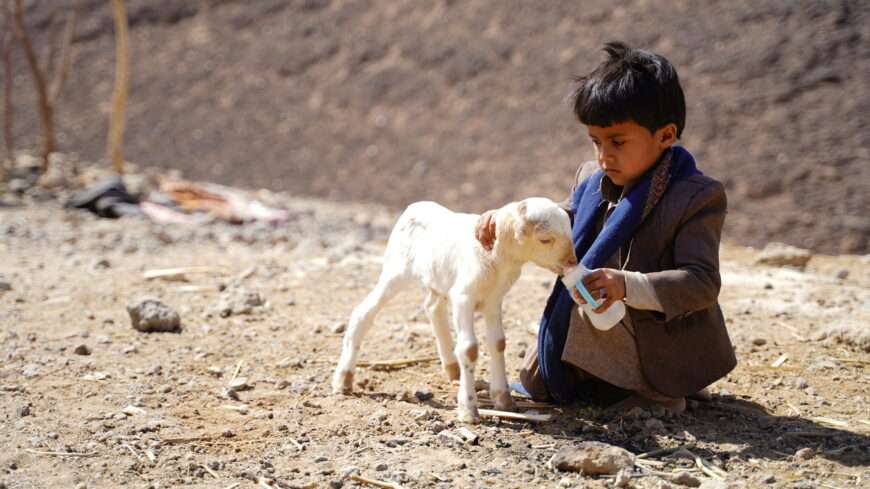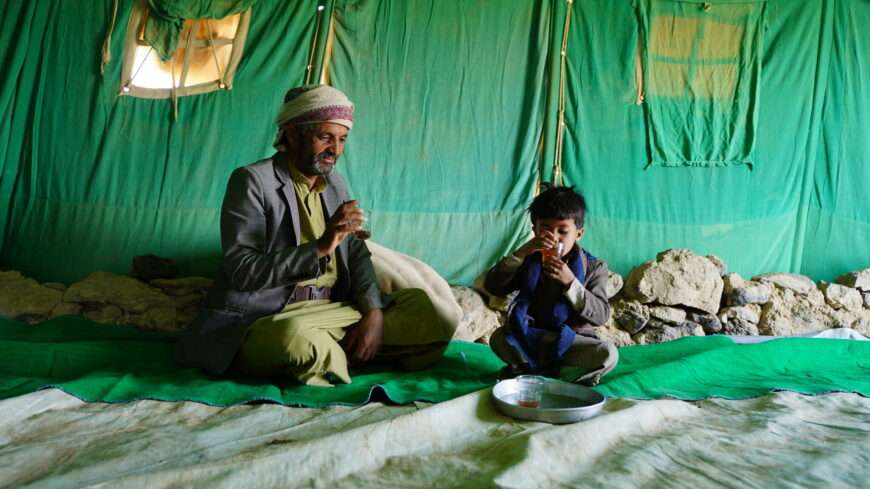The human cost of the war in Yemen is rising sharply as the conflict enters its eighth year, with the number of civilian deaths increasing sharply, hunger on the rise and three quarters of the population in urgent need of humanitarian support, Oxfam warned today.
The international agency said another year of war would bring unimaginable suffering to civilians ―almost two-thirds of Yemenis will go hungry this year unless the warring parties lay down their arms or the international community steps in to fill a massive gap in the appeal budget. This year’s aid program is currently 70 percent underfunded, providing just 15 cents per day per person needing help.
The escalating cost of war includes:
- 4 million people are currently going hungry, with predictions this will rise to 19 million by the end of the year (62 percent of the population and an increase of more than 8 million since the conflict started).
- 8 million more people need humanitarian assistance than did in 2015, the first year of the conflict.
- Since UN human rights monitoring was withdrawn in October 2021 the civilian casualty rate has doubled, now reaching well over 14,500 casualties.
- 24,000 airstrikes have damaged 40 percent of all housing in cities during the conflict.
- During the last seven years, over four million people have been forced to flee from violence.
The Ukraine crisis has exacerbated the situation, raising concerns over supplies of grain and cooking oil. Yemen imports 42 percent of its grain from Ukraine and Oxfam has been told prices have already started to rise. In Sana’a bread went up 35 percent over the week that fighting broke out (200 Yemeni Rial to 270 Yemeni Rial).
Ali Hassan Hadi from Hajah, who has two children suffering from malnutrition, said: “Sometimes my children sleep hungry. If we have lunch, then we skip dinner. We have to cope with the situation. Sometimes we only eat bread, other times we eat cooked food. Mostly we do not eat well.”
Seven long years of war have also caused a fuel crisis. Prices have risen 543 percent since 2019, trebling in just the last three months. Queues at petrol stations are so long that it can take three days to reach the forecourt.
The increase in fuel prices has a knock-on effect, increasing prices of essential items such as food, water and medicines making them unaffordable for many who are already struggling to meet their daily needs. It is also causing a reduction in humanitarian aid deliveries to more remote areas as the fuel prices have increased so much some remote communities are now experiencing a reduced delivery of water and sanitation support.
Oxfam’s Country Director in Yemen, Ferran Puig said: “After seven years of war, Yemenis are desperate for peace – instead they are facing yet more death and destruction. Violence and hunger are on the increase once more and millions of people cannot get the basics their families need.
“People can’t afford to pump water to irrigate their crops and in remote areas where people rely on trucked drinking water, they can’t afford to pay increased prices meaning they have to use water that is not safe to drink. City dwellers in some areas are experiencing electricity cuts of 10-12 hours a day ―those who have them are relying on solar panels to charge mobile phones and supply a small amount of power.”
Farmers are unable to afford to transport produce to markets, causing prices of fresh produce to rise even further. Buses and motorbike taxis are becoming unaffordable leaving many unable to pay the cost of transport to healthcare facilities and other life-saving services. Health facilities across the country could soon be forced to shut off life-saving equipment because of lack of fuel. During the last few days, local media in Taiz have reported that the Al Thawra hospital has stopped its operations due to the fuel shortage.
Government employees have not been paid since the end of 2016. The COVID-19 pandemic coupled with new restrictive regulations has reduced the number of Yemenis able to work in Saudi Arabia and send money to relatives at home. A spiralling currency devaluation means that what little income people may have buys less and less every day forcing Oxfam and other aid agencies to regularly increase the cash transfers they provide to support vulnerable families.
Civilian deaths and injuries in the conflict have doubled since the UN body responsible for monitoring violations of international humanitarian law in Yemen was removed in October of last year. There have been over 14,554 civilian casualties since recording by the Civilian Impact Monitoring project started in 2017. During the last seven years there have been over 24,600 airstrikes across Yemen. In the last few months, shifting frontlines have led to an increase in landmine deaths and injuries around Marib where retreating forces lay them to slow down their opponents. Civilians using mined roads or gathering firewood in contested land are often victims.
Yemenis faced with these problems are forced to resort to cope any way they can. People live in a cycle of debt, increasing numbers are resorting to begging.
Puig said: “Yemen desperately needs a lasting peace so people can rebuild their lives and livelihoods. Without peace the cycle of misery will continue and deepen. Until then, adequate funding for humanitarian aid is critical.”
Notes
The international escalation of conflict in Yemen occurred on 26 March 2015.
Fuel price increase information up to mid-February: on the unofficial market, diesel is selling for US$40 for 20 litres in the North of Yemen while in the government-controlled Southern areas sources say official prices were raised by 26 percent in mid-January to 17,700 Yemeni rial (YR) for 20 litres (US$70) while sources put unofficial prices at around 28,000-30,000 YR for 20 litres ($111-120). The price of 20 litres of cooking gas has more than trebled in Northern Yemen ―prices are now 17000YR (US$28) on the unofficial market compared the official price of 4750YR (around US$8).
Impact of fuel crisis on food availability.
Displacement figures. 4279 households = 25,674 people.
Hunger figure of 19 million and 75 percent of population will need assistance this year.
Aid needs: 15.9 million people needed humanitarian assistance – today the figure is 20.7 million.
Yemen Humanitarian Needs Overview 2015.
Figure for aid per person = $1.3 billion pledged for 2022 divided by 22.8 million (75 percent of 30.3 million population) = $57 per person in need per year = 15 cents per day for each person in need.





